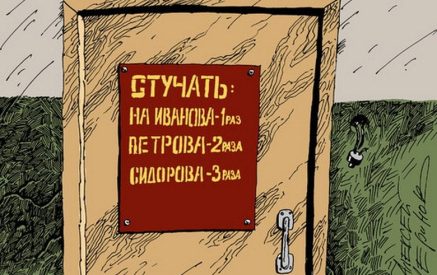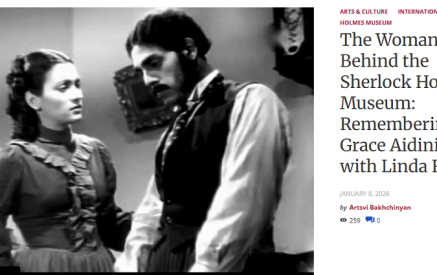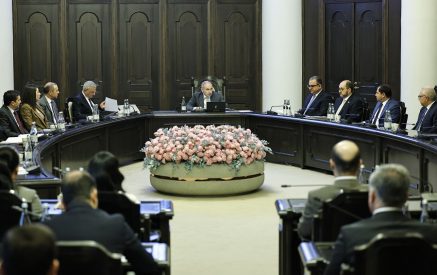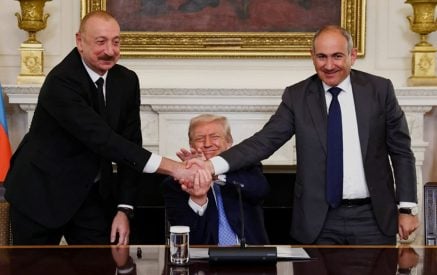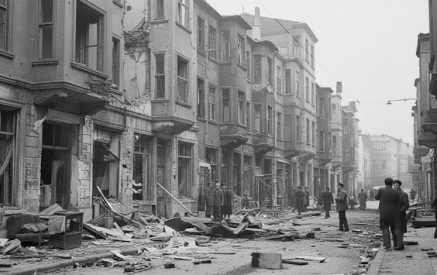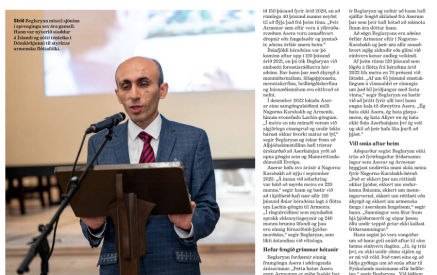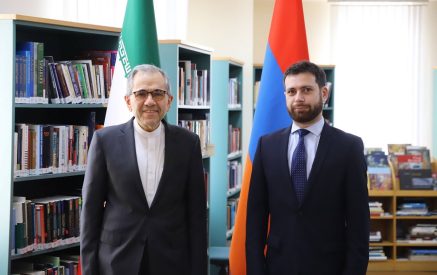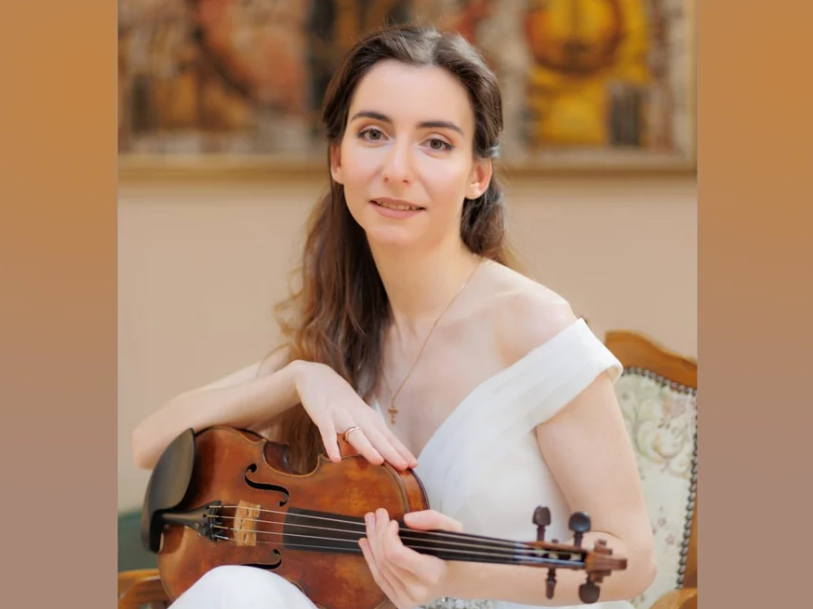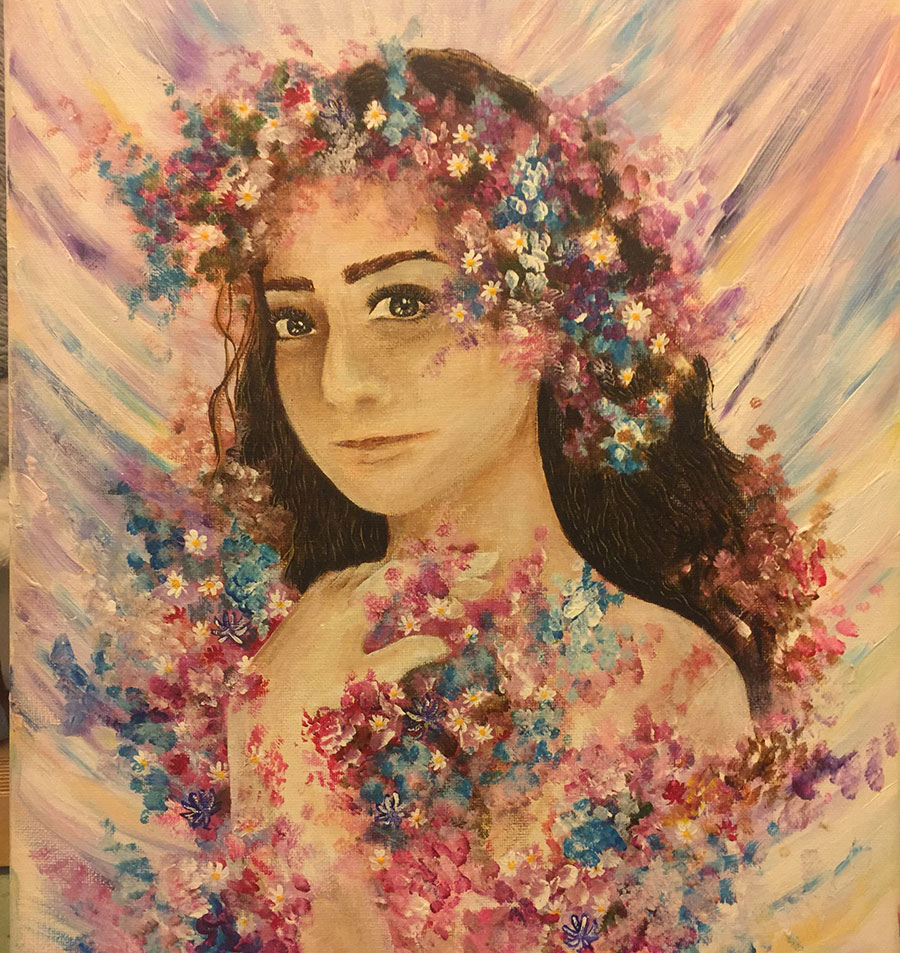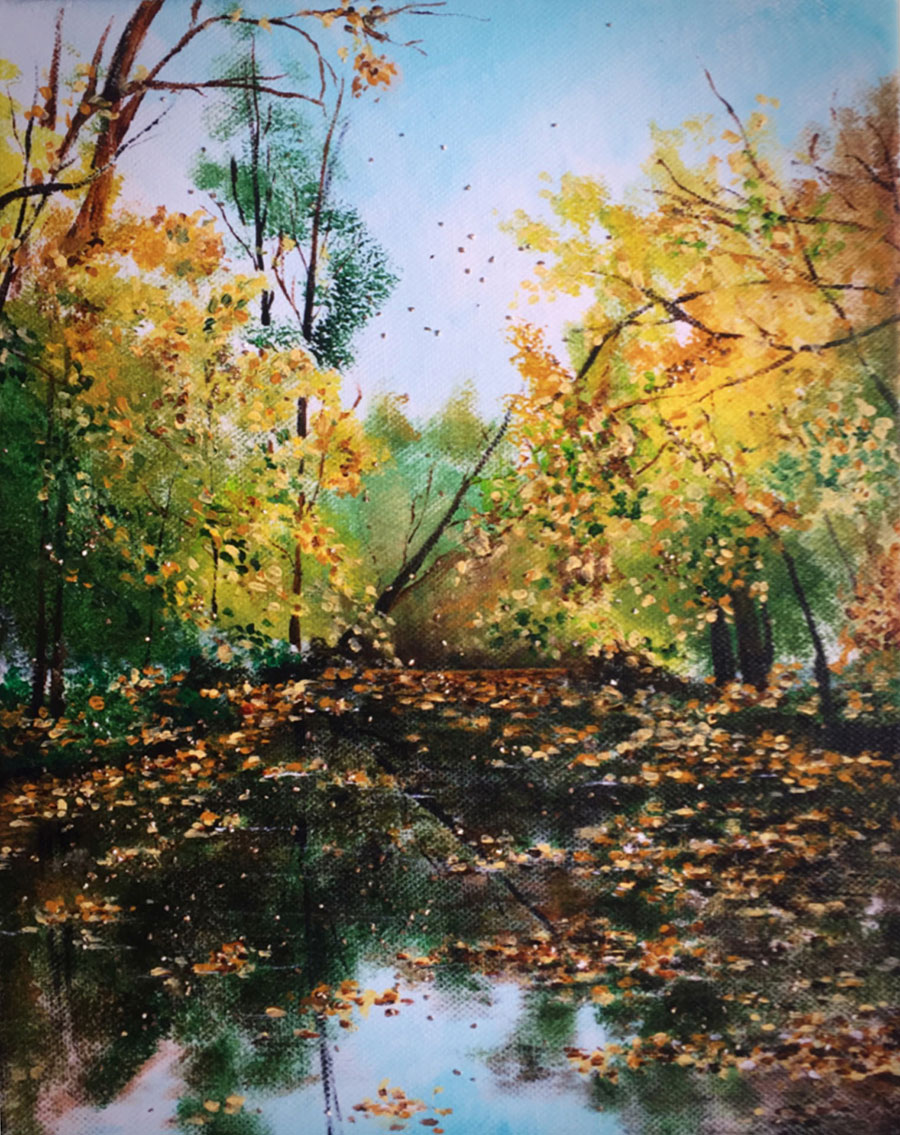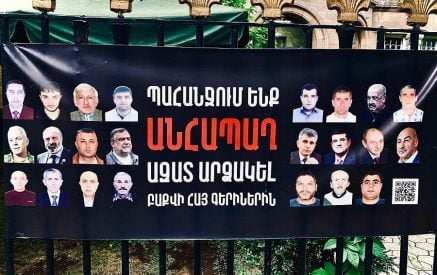A Creative Portrait of Violinist Diana Adamyan
by composer Arpine Kalinina
On June 6th, the exceptionally talented young Armenian violinist Diana Adamyan, a laureate of prestigious international competitions, including the Menuhin Competition for Young Violinists in 2018 and the 16th Khachaturian International Competition, joined the Armenian State Symphony Orchestra for the opening ceremony of the 20th Khachaturian International Competition. She performed Aram Khachaturian’s Violin Concerto under the baton of Sergey Smbatyan at the Aram Khachaturian Concert Hall in Yerevan.
On April 25th, at the same concert hall, Diana Adamyan participated in a memorable concert by the Armenian State Symphony Orchestra, dedicated to the 100th anniversary of the renowned violinist and esteemed teacher of the Armenian Soviet Socialist Republic, Petros Haykazyan, who was Diana’s former teacher. The program included Dmitry Shostakovich’s 10th Symphony and Pyotr Tchaikovsky’s Violin Concerto.
Read also
On this occasion, I had the opportunity to have a conversation with Diana.
The concert held on April 25th was a tribute to your teacher, the violinist Petros Haykazyan. When did you begin studying with him, and for how long? Please tell us about him as a teacher.
I began playing the violin with Petros Haykazyan at the age of 5 and studied with him for 12 years. By the time I was 18, under his guidance I had completed my studies at the Tchaikovsky Specialized Secondary Music School in Yerevan. I am proud and fortunate to have had such a remarkable teacher in my life. He wasn’t just a music teacher; he was an outstanding human being, and knowing him helped me understand the kind of person I wanted to become. With abiding respect and affection, I can say that a part of my teacher exists in me, a part of his illuminated soul, and wherever I go, I carry him in my heart.
He was a calm and composed educator with a voice that conveyed universal peace, exuding warmth and positivity. He was always extremely patient and clear in his explanations, showing great love for all his students, whom he affectionately called “my dear ones.” His kindness and tranquility were passed on to us as his students.
Every lesson with Petros Haykazyan was a joyful celebration. Our classes were held on Wednesdays and Saturdays, and I was his first student on those days. I remember the anticipation of waiting by the door for him to arrive. He would open the door and welcome me into the world of music. Every detail of those moments remains vivid in my memory.
My younger sister also had the privilege of studying with Petros Haykazyan for five years. Unfortunately, she couldn’t study longer because he passed away. I recall that he always attended our concerts, sitting in the first row. We would look at him and draw strength from his presence.
You come from a family with a rich musical background. Please tell us about your family and your educational journey in music.
I was born into a family of musicians. My father, Hakob Adamyan, my mother, Nune Antashyan (both members of the National Chamber Orchestra of Armenia), and my sister Alina Adamyan are all violinists. My grandparents and other relatives are musicians as well. Thanks to my parents, I developed a love for music from a young age, and it has been a guiding light in my life since birth. Growing up in a musical family naturally led me to choose music as my path, and I never considered any other profession.
After completing my studies with Petros Haykazyan, I spent a year at the Komitas State Conservatory of Yerevan studying with Eduard Tadevosyan before moving to Munich. Last year, I completed my bachelor’s degree at the Hochschule für Musik und Theater München under the guidance of Ana Chumachenko.
Is there a particular musical period that resonates with you the most? And if you could have a live conversation with any composer, who would you choose to speak with?
If I had the opportunity to have a conversation with any composer, Mozart would be the first name to come to mind. Mozart, Beethoven, and Bach—these three names…
Every era of music is dear to me. Each period is interconnected with the ones preceding or succeeding it; without one, the other couldn’t exist. I perform music from different periods with delight, appreciating the unique characteristics, nuances, and colors of each era. I also paint, and I always see parallels between music and painting, primarily based on colors. During a performance, it may seem that you understand the music clearly, but over the years, as you mature, you start discovering new colors and worlds within the same composition. This leads to everlasting cultivation and growth.
You mentioned that you paint. Have you ever tried your hand at music composition? Have you ever wished to write your own cadenza for a concerto?
I haven’t had much experience in music composition, except for one instance when I was required to write a cadenza for a Mozart concerto to participate in the Yehudi Menuhin International Competition for Young Violinists. I found it extremely challenging, and wrote it with great difficulty, feeling stretched thin. Perhaps there will come a time when it feels more natural. For now, I am fully focused on the art of my performance.
How does your painting practice influence your music performances?
While performing music, I experience and see a palette of colors. It feels like I’m painting live on canvas. These paintings aren’t retained in my memory; they’re made up of colors and brushstrokes that mirror the impressions and mood of the music I’m performing at that moment. Painting helps me generate a multitude of colors while playing. On stage, I feel a twofold joy—performing music while painting colors in my imagination. However, when I paint on canvas, my mood, nature, the weather, and impressions of the day, all influence me in the creation of the painting.
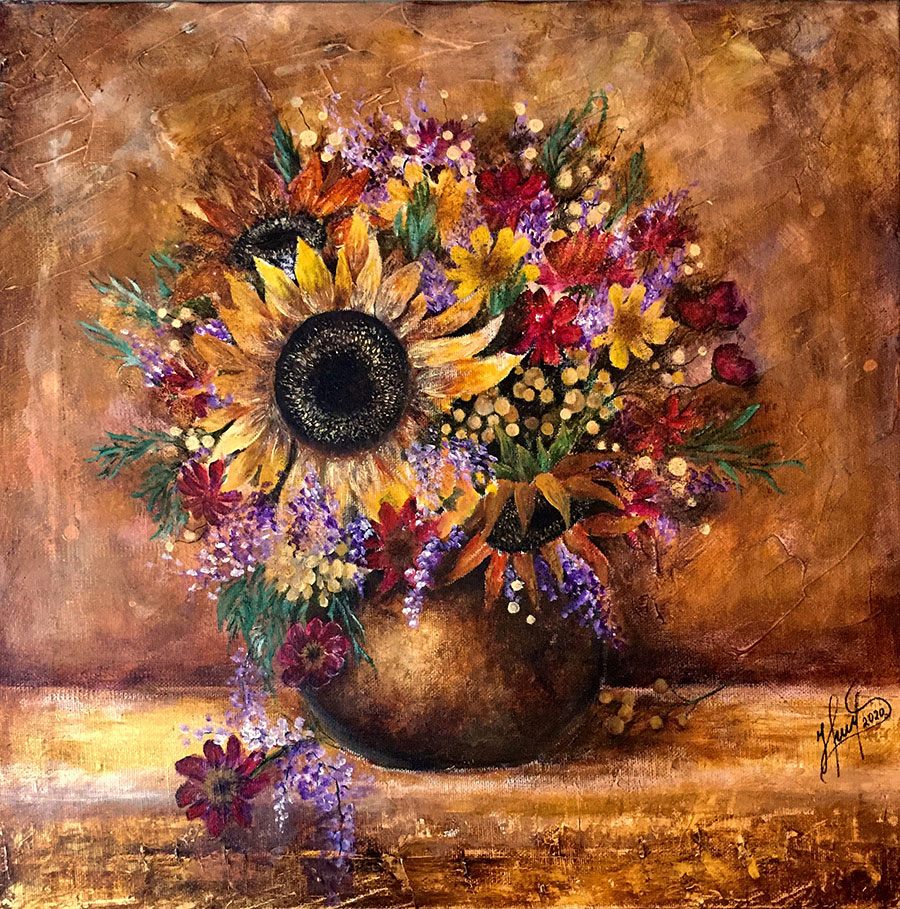
In your performances and paintings, I see a unique understanding of beauty. What does beauty mean to you?
For me, beauty is light.
The light emitted and felt from the stage as you perform… What can you say about the interaction between nature and you? A great Armenian painter of the 20th century, Martiros Saryan, once said: “The most wonderful creation of nature is a human. Human is nature itself. Only through a human does nature understand itself.”
Painting flowers allows me to express a multitude of colors, which is why they are a frequent subject of my art. Light, too, serves as an impression of nature that inspires me. I am incredibly grateful to my parents and teachers who introduced me to the world of music. Through music, I can convey to others the light, grace, and spiritual values of God. I recall Beethoven’s words that music is the mediator between God and the audience.
Watching you from the stage, there’s a sense that you seem to embody the essence of spring. You’ve mentioned how nature and mood influence your art. Does spring hold a special place in your life?
Recently, I asked myself that very question about spring. While I appreciate all the seasons, I must confess that I am truly a spring person at heart. I would describe myself as a spring creature: I was born in spring, and I adore this season—the awakening of life, when the sun comes out after the cold, wintry days. Interestingly, though, when it comes to painting, I find myself drawn to autumn. Many of my paintings portray autumn landscapes.
In the Art of painting, self-portraiture is a common genre. On your official website, I noticed a painting that appears to be a self-portrait. If you were to choose a musical composition that best mirrors your self-portrait, which one would it be?
At this moment, Debussy comes to mind. But if you were to ask me this question tomorrow, my answer might be different. Art is ever-changing, and for now, my answer is Debussy…
Your playing is beautiful—harmonic, pure, and unadorned. Your character and presence create a magical atmosphere for the audience. Do you believe in fairy tales?
I’m someone who believes in fairy tales and miracles. I don’t expect others to believe, but for me, fairy tales brighten the world; without them, life would be in shades of gray. This magic brings color, light, and sunshine into life. For me, staying connected to the child deep within our souls is the most important thing one can do—it keeps light and fairy tales alive in our lives.
Do you have a special thought, message, or wish that you like to convey to the audience every time before going on stage?
When I participated in the Menuhin Competition, Petros Haykazyan had passed away only a month before the event. It was during the third round of the competition, right before going on stage, my mother (who is always with me backstage) said something to me that I remember every time I step onto the stage. She told me that my teacher, Petros Haykazyan, is with me, standing behind me; he is my angel (there were some performances where I felt that angels seemed to be standing alongside me). My mother continued, ‘You should play in such a way that angels surround you, and the child-angels sing at your side. Imagine the wings of angels that protect you.’ This feeling is what I strive to maintain every time I go on stage, but, of course, it isn’t always present throughout every concert, depending on the circumstances, mood, and audience. However, before every performance, I do try to play in a way that feels like the angels are singing with me and surrounding me.
I listened to your performance of the Bruch concerto online during the third round of the Menuhin Competition, and it sounded beautifully accomplished, as if there indeed was a protective aura at your side. What was the most touching, and unforgettable experience you had during the competitions you participated in?
After the third round of the Menuhin Competition, when we stepped on stage to hear the results, the first thing I saw was my parents. They were sitting in the hall, holding each other’s hands tightly. When it was announced that I had been awarded the 1st prize, I saw their eyes filled with tears of happiness. I can’t forget those eyes. This is my most vivid and cherished memory.
You are a participant in important international festivals and projects, with a wide array of concert activities abroad. Is there a specific country or culture that particularly interests you and that you would like to discover?
Of course, getting acquainted with other cultures is very interesting to me. When I was studying in Germany, I learned alongside students from all around the world. Communication and collaboration with them deeply enriched my creative life, complementing the experience I gained from my teachers there. That multicultural atmosphere and cultural exchange was very educational. In parallel with this, I would like to delve deeper into Armenian culture—there are many aspects I still want to discover within my own ancient culture.
What role does Armenian music play in your creative life?
As an Armenian musician, I deeply value Armenian culture and music. At the end of my concerts abroad, I always include Armenian music as an encore. I have observed that Armenian music leaves a profound impact on international audiences. After the concerts, many people approach me and express gratitude for introducing them to Armenian music, and some become interested in Armenian culture as a result. I feel happy to have a small role in spreading Armenian music around the world.
What role does contemporary music play in your creative process? Have you had the opportunity to collaborate with a modern composer?
So far, I haven’t had the opportunity to collaborate with a contemporary composer. I’ve only played a couple of small pieces by modern composers. I don’t know contemporary music as deeply as I would like to, but I want to explore this unique world more profoundly.
You primarily perform as a soloist. How important is chamber music in your concert activities?
Chamber music holds a significant place in my musical life, and I try to perform it as often as I can. I’ve been fortunate to participate in the Seiji Ozawa International Academy Switzerland on several occasions. I wholeheartedly share the view of the great Japanese Maestro Seiji Ozawa that chamber music, particularly string quartets, play a fundamental role in a musician’s development. Rehearsing and performing as a string quartet member, where listening to each other is key, enhances one’s ability to perform in or with an orchestra or alongside a pianist. It provides a new understanding of changing harmonies, and interactions among different instruments and timbres.
You discussed the interactions of different instruments and timbres. Could you please talk about your own instrument?
I play an instrument made by Neapolitan violin maker Nicolò Gagliano in 1760. The story of how this instrument came into my life is quite interesting. After the Menuhin Competition, I performed at Cadogan Hall in London with the Royal Philharmonic Orchestra. After the concert, a couple approached me and offered me the chance to try their violin to see if its timbre suited me. The next day, I went to them, tried the instrument, and from the very first note, I fell in love with its sound. I have been playing on this instrument for five years now and continue to admire its sound. It is on loan from the Henri Moerel Foundation.
Which great violinists inspire you the most?
When I was little, my mother told me that every great violinist leaves a unique impact on the world of music, and I agree with those words. However, Yehudi Menuhin and David Oistrakh are the most dear to my heart.
Do you have a specific schedule for practicing?
I’d love to have a concrete schedule, but I don’t. I enjoy practicing in the evenings. I start my practice sessions around noon; I’m not a morning person. I like having the flexibility to spread my practice throughout the day when I don’t have other commitments. While I don’t have a strict timetable for practicing, I take breaks for a walk when I notice my concentration wavering. Concentration is crucial during practice. I always try to maintain a balance between practicing and relaxing.
Your concert schedule is quite demanding. What intervals do you typically have between concerts?
I try to avoid scheduling concerts with different programs too close to each other. Currently, I’m in a phase of constant learning, and I’m still discovering the range of my physical and mental abilities. I’m experimenting to see what works best, of course, after careful consideration. If I realize that I can’t overcome something, I refrain from scheduling the concert. I prefer to plan and consider every detail, aiming for a balanced and measured concert schedule while ensuring I have enough time for relaxation. Finding harmony and balance in every aspect of life is crucial; when there’s balance, everything tends to go smoothly.
Could you share more about your collaboration with the Armenian State Symphony Orchestra? Did it begin with the Khachaturian International Competition or earlier?
Prior to the Khachaturian Competition, I had the opportunity to perform a few small pieces with the orchestra. However, it was during the competition that our collaboration truly took off. I am thrilled to have had several opportunities to work with this wonderful orchestra. Collaborating with the orchestra’s founder, Artistic Director, and Principal Conductor, Sergey Smbatyan, is always a great delight for me, and I’m very glad that our collaboration is continuing.
Could you share your experience participating in and winning the 16th Khachaturian Competition?
In 2020, during the pandemic, the Khachaturian Competition became a bright spot for me because many music events were canceled, and it took place online. Playing in a hall without an audience, in front of the glass display of a smartphone, with prerecorded accompaniment was very challenging. When you perform for an audience, there’s a dialogue: you share light and energy with them, and they respond in kind. Playing in an empty hall was an unprecedented experience for me, one that taught me a lot.
The third round of the competition required great efforts from the organizers to arrange. The finalists performed Aram Khachaturian’s concerto with the help of artificial intelligence. I am immensely proud and happy to have become a laureate of a competition named after Aram Khachaturian.
I’m excited to mention that this year, on the 6th of June, I opened the 20th Khachaturian International Competition with Khachaturian’s violin concerto, this time in front of a live audience with the orchestra. The thrilling opening ceremony concert, according to tradition, took place in the hall named after Aram Khachaturian on his birthday.
Thank you for your magnificent interpretation of Aram Khachaturian’s concerto, as well as for this wonderful conversation. I wish you a creative journey filled with light. Do you have any wishes for young musicians?
Never lose your inner light. It will always guide you through difficult situations and keep your path illuminated.










